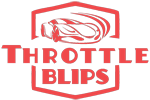Porsche 919 Hybrid steering wheel: A Closer look
 The FIA World Endurance Championship or Le Mans is one of the most grueling races in world motorsport. It requires an amazing amount of fitness and skill to drive these cars which are themselves technological wonders. One of these cars is the Porsche 919 Hybrid racing in the 2016 Championship. The most important part in the car is the steering. During a race, drivers operate 24 button and six paddles on the reverse side of the steering to drive and control this complex machine. Some buttons and switches are re-positioned for the 2016 season to help drivers operate the steering reliably at racing speeds, which go upto 340 kph in Le Mans. Some elements have also been shifted to the dashboard due to shortage of space on the steering itself. Let’s take a detailed look at the steering wheel of the Porsche 919 Hybrid.
The FIA World Endurance Championship or Le Mans is one of the most grueling races in world motorsport. It requires an amazing amount of fitness and skill to drive these cars which are themselves technological wonders. One of these cars is the Porsche 919 Hybrid racing in the 2016 Championship. The most important part in the car is the steering. During a race, drivers operate 24 button and six paddles on the reverse side of the steering to drive and control this complex machine. Some buttons and switches are re-positioned for the 2016 season to help drivers operate the steering reliably at racing speeds, which go upto 340 kph in Le Mans. Some elements have also been shifted to the dashboard due to shortage of space on the steering itself. Let’s take a detailed look at the steering wheel of the Porsche 919 Hybrid.
The steering wheel itself isn’t round, but has a flat rectangle style design, reason being due to the space required during driver changes during the race. Drivers such as Mark Webber or Brendon Hartley, tall guys that they are, would have a problem accommodating their long legs quickly,. There is a large display in the centre, which shows a host of information to the driver, including speed, what gear is engaged, the currently selected motor management, and the charge status of the lithium ion battery, i.e. how much electrical energy is available to be called up to drive the front axle. The electric motor on the front axle supports the turbo charged 2-litre, 4-cylinder combustion engine, which sends power to the rear wheels. The control button at the top left (named DISP) is used to select the displayed information.
The most frequently used buttons are positioned along the top outside edge, so they are easy to reach with the thumb. The blue button at the top right is almost always in use, it is the headlight flasher, used to warn slower cars in the field before they are lapped. Pushing it once causes the headlights to flash three times. In daylight, the drivers keep their thumb on it almost permanently, as naturally the headlight signal is more difficult to perceive at that time.
The red button at the top left is also very frequently used. It is used to demand electrical power from the battery, or “boost” as it is called. The drivers can boost to pass, but must be clever about rationing the power. The amount of energy per lap is specified. The yardstick is one lap in Le Mans, where eight megajoules are available. The amounts are converted accordingly for shorter circuits. The amount of energy a driver uses, for example, in the middle of a lap to get free of traffic will not be available for the rest of the lap.
The rotary switches left and right below the display (TC/CON and TC R) are for pre-setting the traction control. To fine tune for various engine and hybrid set-tings, the drivers use the buttons on the top two levels, TF- and TF+ in light yellow, MI- and MI+ in blue. Below them there are the plus and minus buttons in pink to distribute the brake balance (BR) between the front and rear axle.
Coming to the green buttons, the left one operates the radio (RAD) and the one on the right hand side is the OK button for the driver to confirm he performed the setting changes requested to him via the pit radio.T he engineers are not allowed to interfere actively, due to prohibition of multi directional telemetry. They can just give the drivers information and orders from the data they receive.
The orange buttons on the next level below operate the drink bottle (left, DRINK) and on the right hand side the sailing mode (SAIL), which is a fuel saving driving mode with no acceleration from the combustion engine.
The golden colored button PIT on the left hand side engages the speed limiter for the pit lane (60 km/h). The other golden button on the right hand side is labeled FCY and is the speed limiter for neutralization periods, as when there is a “Full Course Yellow” all cars have to go at 80 km/h.
Continued…
Page 1 2




